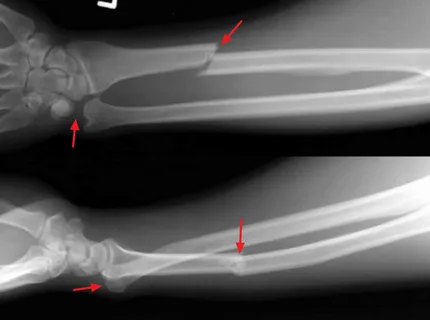Accidents can happen anytime, anywhere. One wrong step can result in a fracture or dislocation, both of which are medical emergencies that need immediate attention. Whether it’s a fall at home, a sports injury, or a workplace accident, knowing what to do in the first few moments can make a big difference. In this guide, we’ll walk you through what fractures and dislocations are, how to identify them, and how urgent care services—like ours—can help you heal quickly and safely.
What is a Fracture?
A fracture is a break in the bone. It can be minor or severe, ranging from a small hairline crack to a complete break. Fractures can be:
- Closed (simple) – bone breaks but doesn’t pierce the skin.
- Open (compound) – bone breaks through the skin, increasing infection risk.
- Stress fracture – small cracks due to repetitive motion or stress.
Symptoms of a fracture:
- Intense pain
- Swelling or bruising
- Deformity in the affected area
- Inability to move or put weight on the area
What is a Dislocation?
A dislocation occurs when a bone slips out of its joint. Commonly dislocated areas include the shoulder, elbow, fingers, and knee.
Symptoms of a dislocation:
- Severe pain at the joint
- Swelling and bruising
- A visibly deformed joint
- Limited or no movement
Dislocations can be just as serious as fractures. Without quick treatment, they can cause long-term damage to the ligaments, tendons, and nerves.
What to Do Immediately After a Fracture or Dislocation
In any emergency, the first few minutes are critical. Here’s what you should do:
1. Stay Calm and Assess the Injury
Keep the injured person calm. Check if the injury is a fracture or dislocation by observing pain level, shape of the area, and whether they can move it.
2. Immobilize the Area
Use a splint or sling if available. Avoid moving the affected limb. Improper movement can make the injury worse.
3. Apply Ice
Wrap an ice pack in a towel and apply to reduce swelling and pain. Avoid placing ice directly on the skin.
4. Avoid Food or Drink
If surgery is required, eating or drinking can cause delays. Always wait for medical advice first.
5. Seek Immediate Medical Attention
Head to a nearby urgent care clinic or emergency medical center. Time matters in these situations.
When to Choose Urgent Care for Fractures & Dislocations
Urgent care clinics are a great choice when the injury is serious but not life-threatening. At our walk-in clinic, we treat:
- Minor fractures (fingers, toes, wrists)
- Simple dislocations (shoulder, knee, fingers)
- Sports-related injuries
- Workplace and home accidents
We offer X-rays, splinting, referrals, and follow-up care—all in one place, with no appointment needed.
Why Choose Us for Emergency Injury Care?
At our urgent care clinic, we’re equipped to treat fractures and dislocations quickly and effectively. Here’s what makes us stand out:
✅ Quick Walk-In Access
No long waits like hospital ERs. Walk in and get seen fast.
✅ On-Site Digital X-Rays
We can diagnose your injury immediately with in-house imaging.
✅ Experienced Providers
Our medical team has years of experience treating orthopedic injuries.
✅ Cost-Effective
Most urgent care visits cost less than an ER trip.
✅ Comprehensive Care
From pain relief to follow-up, we’ve got you covered.
What Happens After You Visit?
Once you’re evaluated and treated, we’ll give you detailed care instructions. These may include:
- Resting the injured area (RICE: Rest, Ice, Compression, Elevation)
- Wearing a sling or splint
- Pain management with over-the-counter meds
- Scheduled follow-up visits or orthopedic referrals
We may also offer referral to specialists if the injury needs surgery or long-term care.
When to Go to the ER Instead
While urgent care is great for minor to moderate injuries, certain situations require emergency room care. Visit the ER if:
- Bone is sticking out of the skin (compound fracture)
- Heavy bleeding that won’t stop
- The area is turning blue or numb
- Multiple injuries or trauma from a car accident
How to Prevent Fractures and Dislocations
While accidents happen, you can reduce your risk by:
- Wearing proper footwear
- Using safety equipment during sports or work
- Keeping your home clutter-free to avoid tripping
- Strengthening muscles through regular exercise
- Getting enough calcium and vitamin D for strong bones
Final Thoughts
Fractures and dislocations are serious injuries, but with the right care, you can recover quickly and avoid complications. Our urgent care clinic is here to help you with immediate, expert treatment—no appointment necessary. Whether it’s a minor fracture or a dislocated joint, trust us to get you back on your feet.

